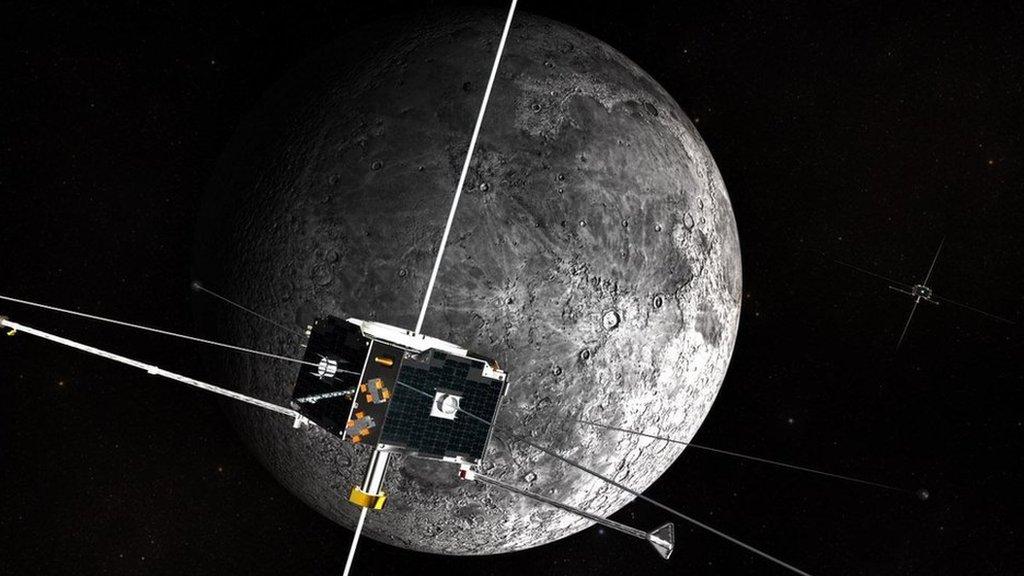Nasa to build the internet on the Moon!
- Published
- comments

An artist's concept of the Artemis spacecraft in orbit around the Moon
Ever dreamed of going into space but been put off because you can't stream films, watch YouTube or play a video game up there?
Well that dream is one step closer to becoming reality...
Nasa has teamed up with a mobile phone company, to build the first 4G mobile phone network on the Moon!
The space agency's Artemis programme aims to establish a sustainable human presence on the Moon within the next decade.
And let's face it - you need to be able to check your phone when you're there!
But joking aside - why does the Moon need access to the internet?
Artemis artwork from Nasa
What else do we know?
Well the plan isn't really for astronauts' personal phones - it's more about using the data for other things.
The network - which Nasa is building with phone-maker Nokia - will be used for remote controlling lunar robots, including command and control functions, and even streaming high-definition video.
Astronauts will be able to communicate via voice and video as well as exchange data through the wireless communications, Nokia says.
Nokia's chief technology officer, Marcus Weldon, said: "We are now building the first ever cellular communications network on the Moon. Reliable, resilient and high-capacity communications networks will be key to supporting sustainable human presence on the lunar surface."
We're going back to the Moon for scientific discovery, economic benefits, and inspiration for a new generation of explorers.
How will they do it?
Setting up the internet on the Moon is more challenging than doing it on Earth, but Nokia says that its equipment has been specifically designed to withstand the difficult conditions of the launch and will operate in space without an atmosphere.
There will be a base station, radio antennas and user equipment - but it's not yet clear if this equipment will be a normal smartphone.
Nokia also expects the upgrade from 4G to 5G in time, just like on Earth.
Nasa wants companies to collect Moon samples in exchange for cash
What is the Artmeis programme?
Nasa's Artemis programme aims to take the first woman and the next man taken to the Moon by 2024.
The hope is to establish a base on the Moon which can be used as a refuelling and research station to allow further human exploration on Mars.
"As we build up a sustainable presence, we're also building momentum toward those first human steps on the Red Planet", Nasa said last month.
- Published13 May 2020
- Published1 May 2020
- Published19 October 2020
